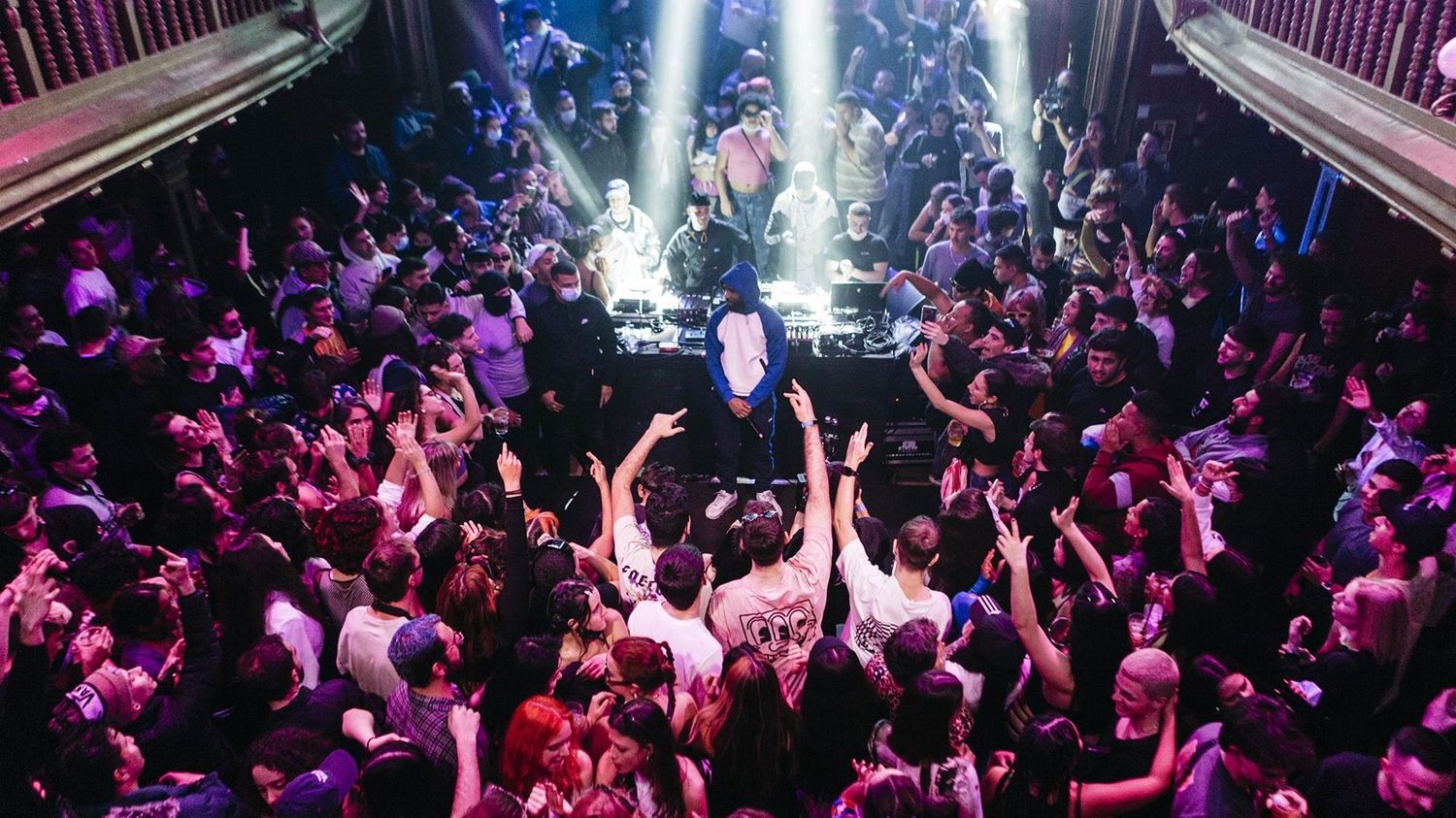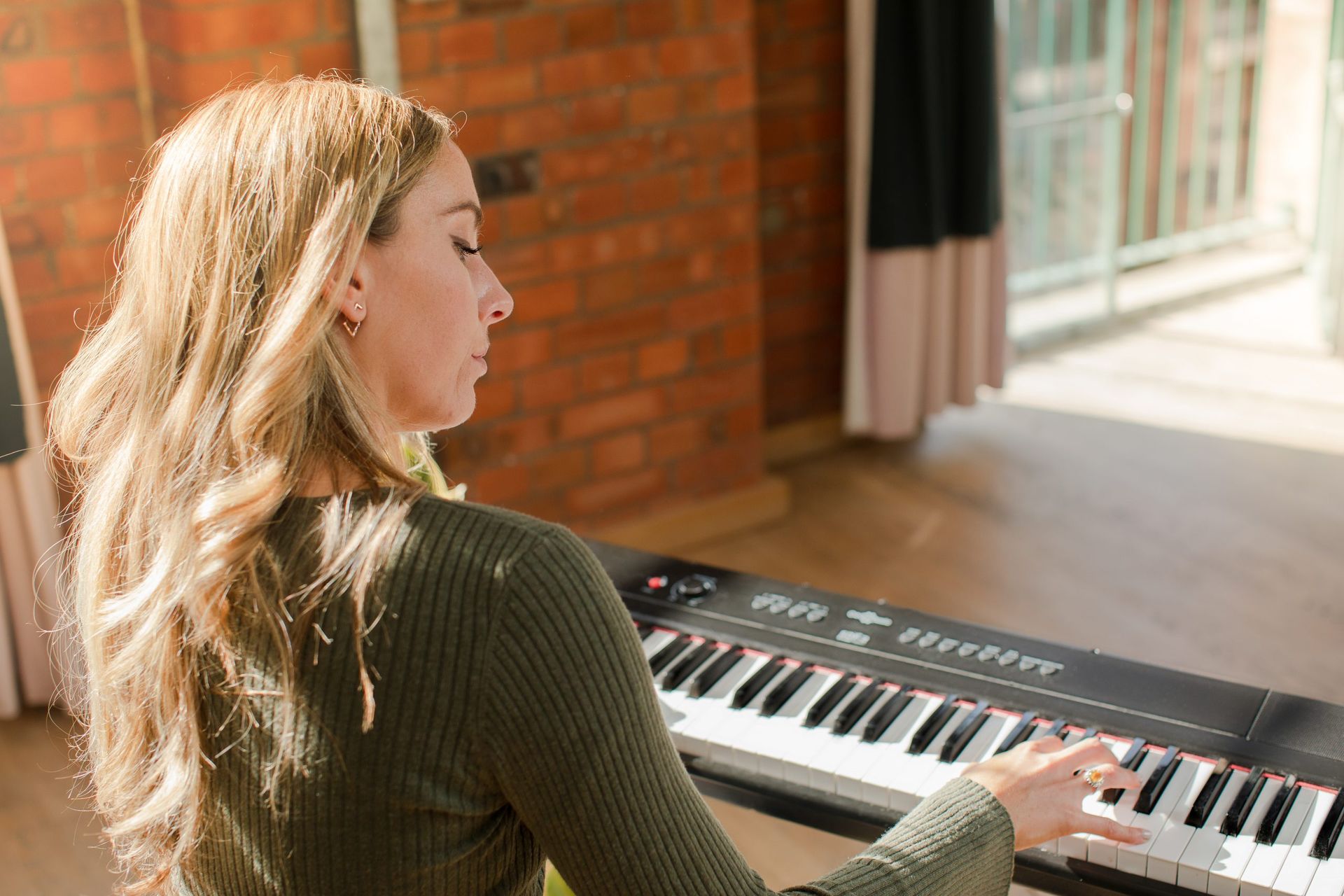Home>Production & Technology>Tempo>What Is Considered A Fast Tempo In Music


Tempo
What Is Considered A Fast Tempo In Music
Modified: January 22, 2024
Learn about what is considered a fast tempo in music and how it affects the overall vibe and energy of a song. Discover different tempos and their impact on musical compositions.
(Many of the links in this article redirect to a specific reviewed product. Your purchase of these products through affiliate links helps to generate commission for AudioLover.com, at no extra cost. Learn more)
Table of Contents
Introduction
Tempo is a fundamental element of music that sets the pace and rhythm of a composition. It refers to the speed at which a musical piece is performed, and it plays a crucial role in shaping the overall mood and energy of the music. Understanding tempo and its variations is essential for musicians, producers, and music enthusiasts alike.
In this article, we will explore the concept of tempo in music, particularly focusing on what is considered a fast tempo. We will delve into the factors that influence tempo perception, examine how to determine a fast tempo in music, and discuss musical genres known for their fast-paced rhythm. Additionally, we will explore the effects of fast tempo on listener experience and how tempo can impact music production. Lastly, we will highlight notable examples of fast tempo songs that have captivated audiences across different genres and time periods.
Whether you are a musician, music lover, or someone seeking to expand your knowledge about music, this article will provide valuable insights into the world of fast tempo music and its impact. So, let’s dive in and explore the dynamic realm of tempo in music!
Understanding Tempo in Music
Tempo is a fundamental aspect of music that refers to the speed at which a piece of music is performed. It determines the rhythm and pace of a composition, and influences the overall feel and energy of the music. Tempo is indicated by a numerical value, known as the beats per minute (BPM), which represents the number of beats or pulses occurring in one minute.
Tempo can range from slow and leisurely to fast and energetic, and every tempo has its own unique characteristics and effect on the listener. A slower tempo often evokes a sense of calmness, tranquility, or melancholy, while a faster tempo can elicit excitement, energy, and a sense of urgency.
Aside from the beats per minute measurement, tempo can be described using various musical terms, such as largo (very slow), adagio (slow), moderato (moderate), allegro (fast), and presto (very fast). These terms provide a more nuanced understanding of the desired tempo for a particular piece of music.
Tempo is typically set and maintained by a conductor in an orchestral setting or by a metronome, which is a device that produces a steady beat. However, in contemporary music production, tempo can be manipulated and changed to suit the desired artistic expression of the composer or producer.
Understanding tempo is crucial for musicians and performers as it allows them to maintain rhythmic accuracy and synchronization with other musicians. It also guides the emotional interpretation and expression of a musical piece, helping musicians convey the intended mood and atmosphere.
Moreover, tempo acts as a unifying factor in music, providing a consistent framework that enables musicians and listeners to connect with the rhythm and flow of a composition. It is through tempo that musicians can create a compelling musical narrative and engage the audience on a visceral level.
Now that we have a basic understanding of tempo, let’s explore the factors that can influence our perception of tempo in music.
Factors That Influence Tempo Perception
While tempo is primarily determined by the beats per minute measurement, our perception of tempo can be influenced by various factors that go beyond the numerical value. These factors can shape how we interpret and experience the tempo of a piece of music. Let’s explore some of the key factors that influence tempo perception:
1. Musical Context: The genre, style, and cultural background of a musical composition can greatly affect our perception of tempo. For example, a fast tempo in classical music might be considered moderate in the context of electronic dance music. Cultural associations and musical expectations play a significant role in how we perceive the speed of a piece.
2. Instrumentation and Arrangement: The choice of instruments and the overall arrangement of a composition can impact our perception of tempo. Certain instruments or combinations of instruments may create a sense of urgency or set a faster pace, while others may evoke a slower, more relaxed feeling. The dynamics and timbre of the instruments also play a role in shaping our perception of tempo.
3. Syncopation and Rhythmic Complexity: Syncopated rhythms and complex rhythmic patterns can make a piece of music feel faster than it actually is. These rhythmic intricacies create an illusion of speed and can add excitement and energy to a composition, even at a relatively moderate tempo.
4. Emotional Content: The emotional content of a composition can influence our perception of tempo. For instance, a joyful or intense piece of music might make a fast tempo feel even faster, while a melancholic or reflective piece might slow down our perception of tempo.
5. Personal Factors: Our individual musical background, preferences, and familiarity with certain genres can also impact our perception of tempo. A musician or someone with a trained ear might have a more precise understanding of tempo, while a casual listener may rely more on their emotional response to the music.
It’s important to remember that tempo perception can be subjective and can vary from person to person. However, these factors provide a framework for understanding how different elements contribute to our perception of tempo in music. By considering these factors, musicians and producers can effectively manipulate tempo to create the intended emotional impact and engage the audience in a powerful way.
Determining a Fast Tempo in Music
Determining what constitutes a fast tempo in music can be subjective, as it depends on various factors such as genre, cultural context, and individual perception. However, there are some general guidelines and common characteristics that can help define a fast tempo. Let’s explore how a fast tempo is determined in music:
1. Beats Per Minute (BPM): The primary way to determine tempo is through the beats per minute measurement. In general, a fast tempo is considered to be above 140 BPM. However, this can vary depending on the musical genre. For example, fast-paced electronic dance music often features tempos exceeding 160 BPM, while certain subgenres of rock or metal may have slower tempos that are still considered fast in comparison to other genres.
2. Perceived Speed: Apart from the numerical BPM value, the perceived speed and energy of a composition contribute to determining the tempo. A piece of music with a rapid and frenetic rhythm, regardless of its exact BPM, can be perceived as having a fast tempo. The intensity and complexity of the musical arrangement can create the perception of speed even at a moderate BPM.
3. Musical Genre: Different musical genres are known for their characteristic tempos. For instance, genres like punk rock, speed metal, and certain styles of electronic dance music are associated with fast tempos. On the other hand, genres like ballads and slow jazz tend to have slower tempos. Understanding the typical tempo range of a particular genre can help in determining what constitutes a fast tempo within that genre.
4. Context and Intent: The context and intended purpose of a piece of music also play a role in determining the perceived tempo. A fast tempo may be chosen to create a sense of urgency, energy, excitement, or to fit the mood of a particular song or scene in a film or video game.
It’s important to note that determining a fast tempo is not solely reliant on BPM but also takes into account subjective factors such as musical context and perception. Additionally, the use of syncopation, rhythmic complexity, and other musical elements can enhance the perception of speed and contribute to the overall fast tempo feel.
Ultimately, the determination of a fast tempo in music is a combination of objective measurements and subjective interpretation. Musicians and producers can use this understanding to create dynamic and engaging compositions that evoke the desired emotional response and captivate the listener.
Musical Genres Known for Fast Tempos
Throughout the diverse landscape of music, there are several genres that are renowned for their fast tempos. These genres captivate listeners with their energetic and rapid rhythms, creating a sense of exhilaration and intensity. Let’s explore some of the musical genres known for their fast tempos:
1. Punk Rock: Punk rock is characterized by its high-energy performances and fast-paced rhythms. Bands like The Ramones, The Clash, and Bad Religion showcase a frenetic tempo, often exceeding 180 BPM. The rapid guitar riffs, pounding drums, and energetic vocals are hallmarks of the genre’s fast tempo.
2. Speed Metal: Speed metal, a subgenre of heavy metal, pushes the boundaries of tempo with blistering speed and technical prowess. Bands like Slayer, Megadeth, and Anthrax are known for their lightning-fast guitar solos, rapid double bass drumming, and aggressive vocals, often reaching tempos exceeding 200 BPM.
3. Drum and Bass: Drum and Bass, originating from the UK electronic music scene, is renowned for its fast beats and intricate drum patterns. With tempos ranging from 160 to 180 BPM, the genre features rapid breakbeats, deep basslines, and chopped-up vocal samples, creating a pulsating and energetic atmosphere.
4. Thrash Metal: Thrash metal, another subgenre of heavy metal, combines aggressive guitar riffs, complex drumming, and intense vocals to create a fast and furious sonic experience. Bands like Metallica, Slayer, and Megadeth are known for their rapid tempo, often exceeding 150 BPM, with intricate song structures and high-octane performances.
5. Breakcore: Breakcore is a genre that pushes the boundaries of speed and intensity. With tempos ranging from 200 to 600 BPM, breakcore combines elements of electronic music, hardcore, and jungle to create a chaotic and fast-paced sound. The genre features rapid breakbeats, distorted synths, and intricate sample manipulation.
6. Speed Garage: Speed garage emerged in the UK rave scene and is characterized by its energetic beats and infectious basslines. With tempos ranging from 140 to 160 BPM, speed garage blends elements of garage house and jungle, fusing catchy melodies, fast percussion, and chopped-up vocal samples to create a frenetic atmosphere on the dancefloor.
7. Hardcore Punk: Hardcore punk showcases a relentless and aggressive tempo, driving its raw and powerful sound. Bands like Black Flag, Minor Threat, and Bad Brains are known for their fast and furious performances, with tempos often exceeding 180 BPM, combining high-octane instrumentals with raw and passionate vocals.
These genres represent just a few examples of the wide range of musical styles that embrace fast tempos. Each genre has its own unique characteristics, but all share a common goal of delivering an energetic and intense musical experience. Whether you’re a fan of aggressive guitar-driven music or electronic beats, these genres offer a sonic thrill ride for those seeking fast-paced rhythms.
Effects of Fast Tempo on Listener Experience
A fast tempo can have a profound impact on the listener’s experience, evoking a range of emotions and physical responses. The energetic and rapid rhythm of fast-paced music creates a sense of excitement, intensity, and exhilaration. Let’s explore some of the effects of fast tempo on listener experience:
1. Increase in Energy and Motivation: Fast tempo music has the power to instantly elevate energy levels and ignite a sense of motivation and drive. The brisk pace and dynamic rhythm can stimulate listeners, boosting their energy and injecting a sense of urgency into their activities. Fast tempo music is often used in sports, fitness routines, and motivational settings to enhance performance and increase endurance.
2. Arousal and Excitement: Fast tempo music can heighten emotional arousal and create a sense of excitement and exhilaration. The rapid beat and pulsating rhythm stimulate the senses, making listeners feel more alert and engaged with the music. This heightened state of arousal can enhance the overall listening experience and amplify emotional responses to the music.
3. Dance and Movement: The fast tempo of certain genres, such as electronic dance music and upbeat pop songs, naturally encourages movement and dance. The infectious rhythm and energetic beats compel listeners to sway, tap their feet, or engage in full-blown dance moves. Fast tempo music can unlock the innate human desire to move and express oneself physically.
4. Time Perception: Fast tempo music has the fascinating ability to alter our perception of time. When listening to fast-paced music, time seems to pass by more quickly, making it an effective tool for creating a sense of immersion and preventing boredom. This time-altering effect can make fast tempo music feel like an exhilarating whirlwind, leaving listeners wanting more.
5. Enhanced Focus and Concentration: The high energy and rapid tempo of fast-paced music can improve focus and concentration. It can help individuals work through tasks that require sustained attention, such as studying, working, or engaging in mentally demanding activities. The engaging and stimulating nature of fast tempo music can effectively block out distractions and boost productivity.
6. Mood Elevation: Fast tempo music has the power to uplift mood and induce positive emotions. The energetic rhythm and dynamic melodies can trigger the release of endorphins, the brain’s natural “feel-good” chemicals. Listeners may experience a sense of happiness, excitement, or even euphoria when engaging with fast-paced music, making it a go-to choice for boosting mood and energy levels.
7. Sensory Stimulation: Fast tempo music provides a multisensory experience, engaging both auditory and physical senses. The rapid beat, intricate rhythms, and layers of instrumentation can create a rich and immersive sonic landscape. This sensory stimulation can enhance the enjoyment and engagement with the music, making it a thrilling and captivating experience for listeners.
These effects of fast tempo on listener experience highlight the power of music to evoke emotions, stimulate the mind and body, and create powerful connections with the audience. Whether it’s the rush of adrenaline during a high-energy concert or the joy of dancing to an upbeat tune, fast tempo music has the ability to leave a lasting impact on the listener, making it an essential ingredient in many musical genres and experiences.
How Tempo Can Impact Music Production
Tempo plays a crucial role in music production, shaping the overall sound and feel of a composition. The choice of tempo can have a significant impact on various aspects of the production process, influencing the arrangement, mood, and energy of the music. Let’s explore how tempo can impact music production:
1. Song Structure and Arrangement: The tempo serves as the foundation for constructing the song structure and arrangement. It dictates the pacing and timing of different sections, such as verses, choruses, bridges, and instrumental breaks. The tempo guides the transitions between these sections, ensuring a seamless and cohesive flow throughout the composition.
2. Mood and Emotional Impact: The tempo of a song can evoke different emotions and set the mood for the listener. A slower tempo might create a sense of introspection, melancholy, or romance, while a faster tempo can generate excitement, energy, and joy. Music producers carefully select the tempo to align with the intended emotional impact of a song.
3. Genre and Style: Tempo is closely associated with specific genres and styles of music. Different genres have their distinctive tempo ranges that define their characteristics. For instance, a slower tempo is common in ballads, while fast tempos are prevalent in genres like rock, pop, electronic dance music, and hip-hop. The tempo choice is crucial in staying true to the genre’s conventions and expectations.
4. Instrumentation and Performance: The tempo affects how instruments are played and the performance style. Fast tempos often require more technical proficiency and agility, allowing musicians to showcase their skills through intricate solos or rapid drum fills. Conversely, slower tempos provide an opportunity for musicians to create more deliberate and expressive phrasing.
5. Dynamic Impact and Energy: Tempo has a direct influence on the perceived energy and dynamics of a composition. A fast tempo can give a track an intense and high-energy feel, driving the listener’s excitement and engagement. On the other hand, a slower tempo can create a more relaxed and contemplative atmosphere, allowing for emphasis on lyrics or intricate instrumental details.
6. Danceability and Groove: Tempo is critical in creating music that is danceable and groovy. The right tempo can inspire body movement and make the music more enjoyable for dancing audiences. DJs and producers carefully select tempos that resonate with the desired dance style and create an infectious groove that gets people moving on the dancefloor.
7. Production Techniques and Sound Design: The tempo can influence various production decisions and techniques. It guides the choice of effects, such as time-based effects (reverb, delay) and rhythmic modulation. The tempo also affects the speed and intensity of automation movements, creating dynamic changes in the mix. Sound design elements, like arpeggios or fast-paced synth patterns, can be designed to sync with the tempo, adding a sense of coherence to the production.
In summary, tempo significantly impacts music production by influencing song structure, emotional impact, genre conventions, instrument performance, energy level, danceability, and production techniques. Producers carefully consider the tempo of their compositions to achieve the desired artistic vision, connect with the intended audience, and create a fully immersive and engaging musical experience.
Notable Examples of Fast Tempo Songs
Fast tempo songs have been a staple in the music industry, capturing the attention of listeners with their high-energy performances and rapid rhythms. These songs showcase the incredible technical prowess of musicians and leave a lasting impact on the audience. Let’s explore some notable examples of fast tempo songs that have pushed the boundaries of speed and captivated listeners:
1. “Through the Fire and Flames” by DragonForce: This power metal anthem is renowned for its lightning-fast guitar solos and relentless tempo. With a blistering speed of over 200 BPM throughout the song, it showcases the incredible technical abilities of the band and has become a benchmark for fast-paced guitar playing.
2. “Eruption” by Van Halen: Eddie Van Halen’s instrumental masterpiece is a showcase of virtuosic guitar playing. This fast-paced guitar solo leaves listeners in awe with its rapid-fire fingers, intricate tapping techniques, and lightning-fast runs. It remains one of the most iconic and influential guitar solos in rock music.
3. “The Flight of the Bumblebee” by Nikolai Rimsky-Korsakov: This classical orchestral piece is known for its breathtaking speed and agility. Originally composed for the opera “The Tale of Tsar Saltan,” the piece is a challenging showcase for musicians, featuring a flurry of notes that emulate the flight of a bumblebee.
4. “Raining Blood” by Slayer: As one of the pioneers of thrash metal, Slayer is known for their fast and aggressive sound. “Raining Blood” is an iconic example, with an intense and rapid tempo that sets the stage for the band’s dark and powerful lyrics. The combination of ferocious guitar riffs, pounding drums, and menacing vocals creates a thrilling sonic experience.
5. “Master of Puppets” by Metallica: This heavy metal masterpiece from Metallica exemplifies their ability to blend technicality with intricate songwriting. With a relentless tempo that reaches over 200 BPM during the fast sections, the song displays their mastery of speed and precision.
6. “Wake Me Up” by Avicii: In the realm of electronic dance music, Avicii’s “Wake Me Up” stands out as a fast-paced and infectious anthem. Combining elements of EDM, folk, and pop, the song features an upbeat tempo and energetic drops that had audiences dancing around the world.
7. “Sabotage” by Beastie Boys: With its fast and aggressive tempo, “Sabotage” by the Beastie Boys is a high-energy anthem that has become a rock classic. The overlapping guitar riffs, frenetic drumming, and spirited vocals create an electrifying atmosphere that has made the song a staple in their discography.
These notable examples demonstrate the diverse range of genres and musical styles that embrace fast tempos. From metal to classical, rock to electronic, these songs push the limits of speed and showcase the extraordinary talent and creativity of the artists behind them. They have left an indelible mark on the music industry and continue to inspire and captivate listeners with their unmatched energy and intensity.
Conclusion
Tempo is an essential element of music that influences the pace, energy, and overall experience of a composition. Whether it’s a fast tempo that drives adrenaline and excitement or a slower tempo that evokes introspection and tranquility, the choice of tempo is a crucial decision in music production. Throughout this article, we have explored various aspects of tempo, from understanding its definition and factors that influence our perception to determining what constitutes a fast tempo and its effects on listener experience.
We have learned that tempo goes beyond the numerical measurement of beats per minute (BPM), encompassing elements such as genre, cultural context, and emotional impact. Musical genres known for fast tempos, including punk rock, speed metal, and drum and bass, have captivated audiences with their high-energy performances and rapid rhythms.
The effects of fast tempo on listener experience range from increased energy and motivation to heightened arousal, danceability, and mood elevation. Fast tempo music can also alter our perception of time, enhance focus and concentration, and provide a multi-sensory stimulation that enhances the overall listening experience.
In music production, tempo plays a vital role in shaping song structure, instrumentation, mood, and dynamic impact. It influences the arrangement and flow of the composition, guides the performance style, and determines the genre and style of a musical piece. Tempo can also impact production techniques, sound design decisions, and danceability.
Through notable examples like DragonForce’s “Through the Fire and Flames” and Van Halen’s “Eruption,” we have witnessed the incredible technical abilities of musicians and the awe-inspiring impact of fast tempo songs.
In conclusion, tempo is a powerful tool that music producers, musicians, and listeners can utilize to create captivating, exciting, and memorable musical experiences. The choice of tempo influences emotions, physical responses, and the overall enjoyment of a composition. Whether it’s the adrenaline rush of a high-energy rock anthem or the infectious groove of a dance track, tempo plays a vital role in shaping the magic and impact of music.











